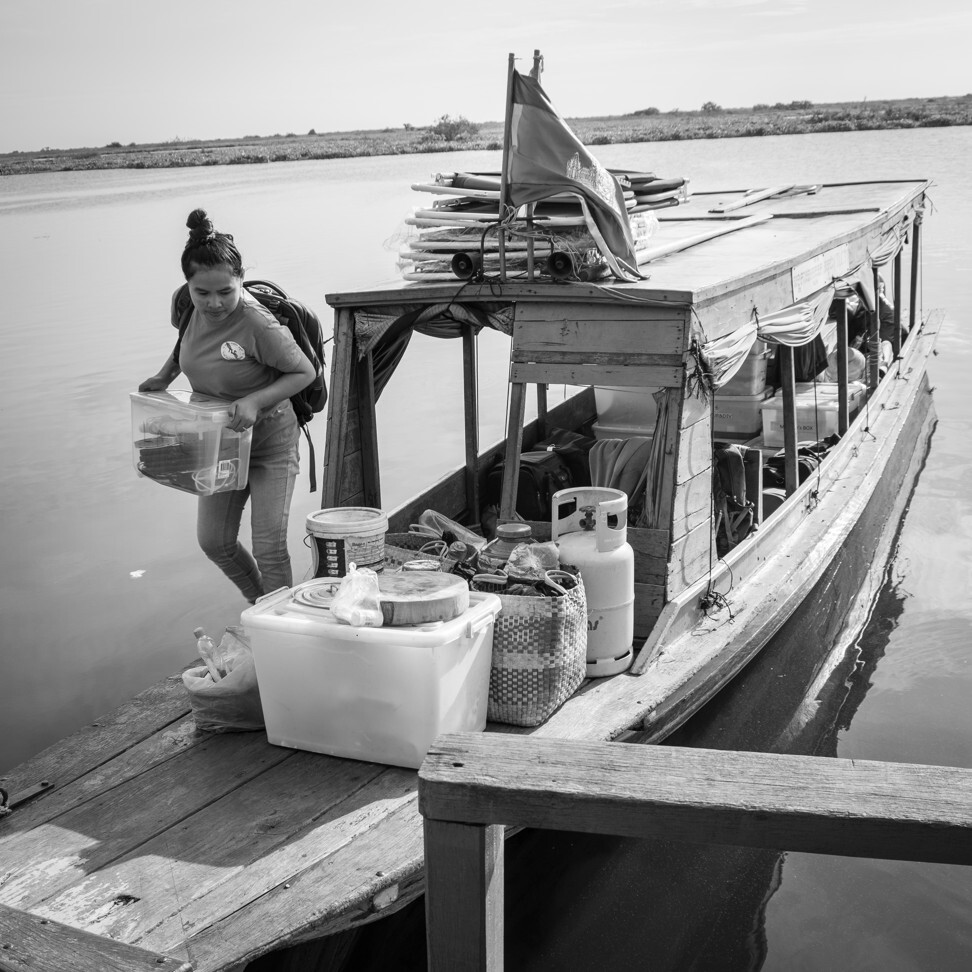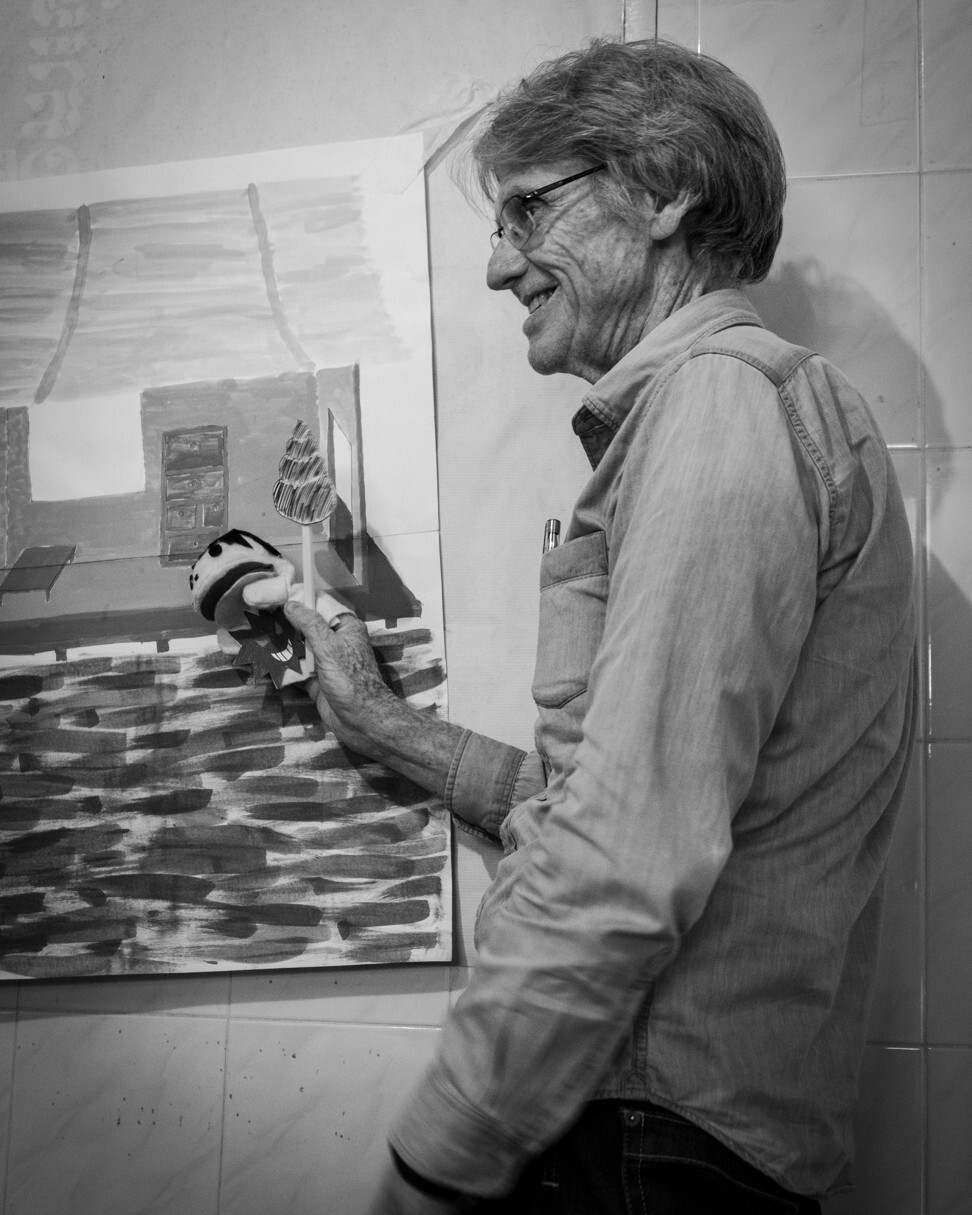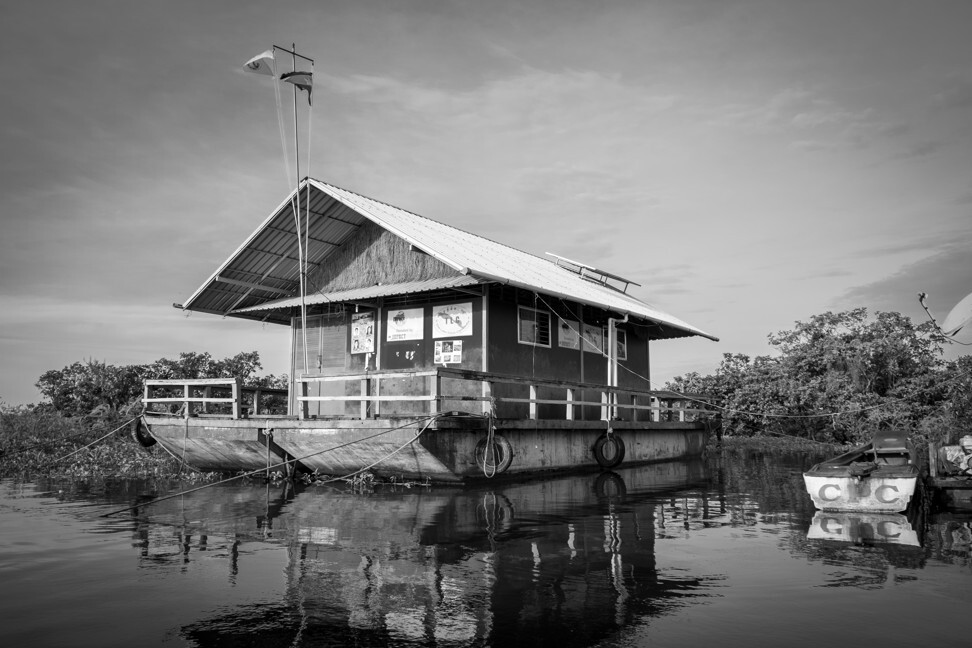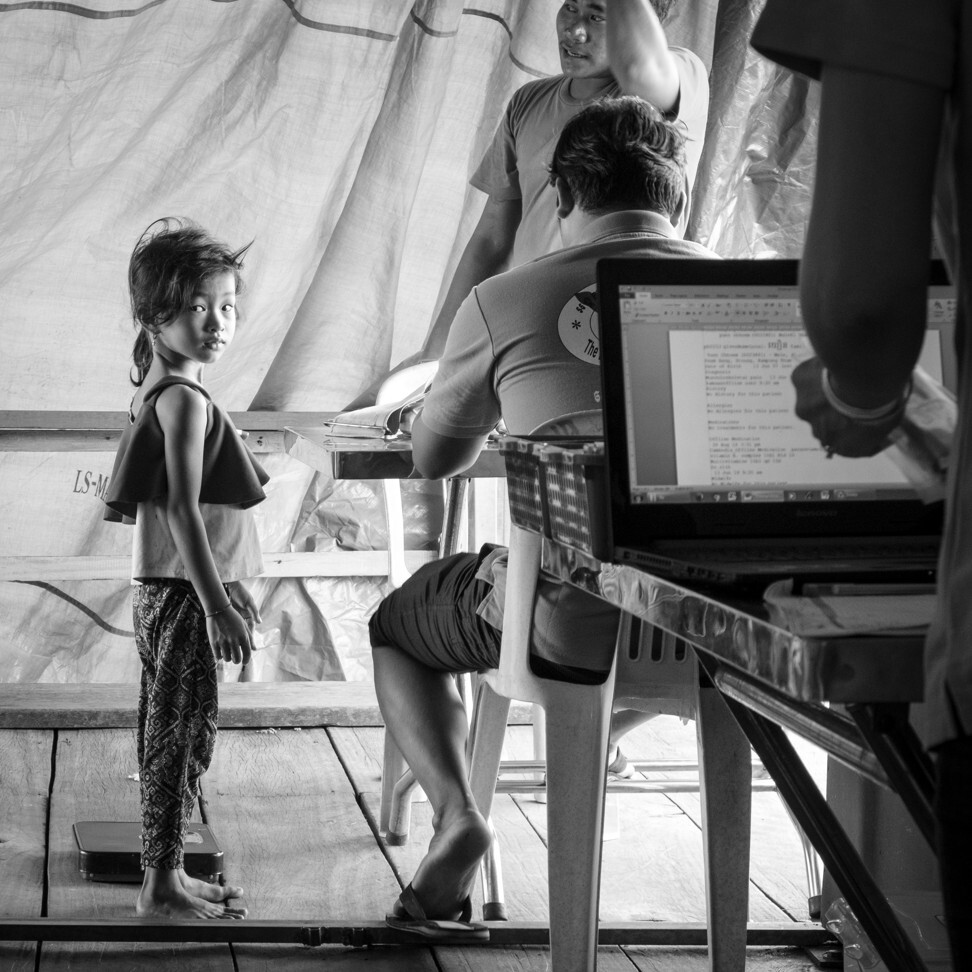Tonlé Sap, in northern Cambodia, is the largest freshwater lake in Southeast Asia. During the May to October rainy season, it swells to six times its dry-season size, extending over 16,000 sq km – an area 200 times that of Hong Kong Island.
Tonlé Sap has also long been one of the planet’s most productive inland fisheries. More than a million people depend on the lake for their livelihood, and about 100,000 live in its vicinity.
While many dwell in stilted villages on the lake’s floodplain, the poorest huddle in floating communities on Tonlé Sap itself, sometimes hours from dry land. Their homes are often fragile, rain-leaking shacks cobbled together from woven reeds, scraps of plywood, tin sheets and tarpaulins, all lashed to wooden or bamboo rafts kept afloat on air-filled oil drums.
They are among the most isolated communities in Cambodia, the vast majority relying on subsistence fishing for their survival.
Dr Hun Thourida helps unload the boat. She has worked with The Lake Clinic (TLC) since 2012, after graduating from the St Petersburg I.I. Mechnikov State Medical Academy, in Russia. “Rida” chose to return to her home country to help the needy. She is fluent in Khmer, English and Russian. Photo: Gary Jones
According to the World Health Organisation, Cambodia has just 1.7 doctors for every 10,000 people (Hong Kong has close to 20, according to government figures released last year). Floating communities on the lake have long had access to zero.
American Jon Morgan first became troubled by the lack of health care on Tonlé Sap in the 1990s, after completing his master’s in public health at the University of Hawaii.
Morgan, who went on to co-found the Angkor Hospital for Children, in nearby Siem Reap, noted the lake dwellers’ poverty, lack of education, poor nutrition and hygiene. Add to that the high fees for treatment, available only far from home, and it was a perfect storm of preventable diseases and treatable injuries that could ruin or end lives.
“I thought, my God, this is a nightmare,” says Morgan, now 67. “Somebody has to do something.”
His solution was The Lake Clinic – Cambodia (going, aptly, by the acronym TLC), which became a reality in 2007 and has grown in scope and ambition ever since. Through the years, TLC has provided more than 240,000 individual medical services to people living on Tonlé Sap, and today operates five “floating clinics” – four on the lake and one on the adjoining Stung Sen River – catering to more than 10,000 inhabitants in nine of the most underserved floating communities.
With five doctors, two nurses, four midwives, a dental nurse and support staff, funded purely by private donations, TLC’s two home-grown medical teams each make a three-day trip into the field every week. They live and work on offshore facilities, providing free medical care and health education to the most forgotten people in one of Asia’s poorest countries.
Jon Morgan at TLC’s headquarters in Siem Reap:œ“My job description is to work myself out of a job.” Photo: Gary Jones
Women and children arrive at a TLC clinic. Unless seriously ill or injured, working-age men will be too busy fishing and tending nets to see a doctor. “These people live by the day,” says TLC’s Dr Hun Thourida. “What they catch is all they have.” Photo: Gary Jones
Nurse Suon Piseth, who has been with TLC for seven years, checks the blood pressure of a patient. Photo: Gary Jones
Dr Hun Thourida pays a house call to a woman unable to reach the clinic. She has been treating the 28-year-old for Pott’s disease – tuberculosis of the spine – that could have resulted in paralysis. The woman lives with her young daughter; her mother, who has Parkinson’s; her father, who lost a leg to gangrene; her sister, who also has TB; and her sister’s husband, the family’s sole breadwinner. Her own husband disappeared when she became unwell. Photo: Gary Jones
TLC’s Peam Bang clinic sits on a pontoon anchored to the lake bed. The water depth at this location rises to about eight metres in the wet season; the “bushes”are the tops of submerged trees. Photo: Gary Jones
TLC medical staff measure and weigh children under the age of five every six months, charting their growth. Cambodia as a whole has a 32 per cent malnutrition rate, according to TLC data, rising to 59 per cent on the lake. Malnutrition is especially common among youngsters, with fish caught or farmed by their families generally being sold. Diets centre on rice, chilli and salt, and lack protein, fat and micronutrients. “Two-thirds of the kids on the lake are stunted due to chronic malnutrition,” Morgan says. “To their families, fish has more value as a commodity to sell than as nutrition.” Photo: Gary Jones
A woman sorts her catch while waiting at a TLC clinic. Tonlé Sap catches have fallen over the past decade due to overfishing, pollution and the construction of hydropower dams upstream, most notably in Laos and China, on the Mekong, which feeds the lake via its tributary, the Tonlé Sap River. Photo: Gary Jones
Midwives Ky Kolyan (left), Chan Soda (centre) and Chhuom Sary, and other members of TLC’s medical team cast off from the operation’s home port at Kampong Khleang. The team’s wooden boat heads for the floating clinic at Peam Bang, almost 50km to the south, where about 200 families live in poverty. Their journey to work will take more than four hours. Photo: Gary Jones
Ky Kolyan explains the dangers of consuming lake water. TLC encourages the use of biosand filters. “We have to tell them: the water might look clear, but you poop in the water and you pee in the water, so it’s not good to drink,” says clinical coordinator Uk Savann. Photo: Gary Jones
Having seen a doctor, patients paddle a rowing boat home. Though many fishing families have access to boats with outboard motors, for those living farthest from land, travel for a medical emergency could cost up to 200,000 riel in diesel fuel, a prohibitive amount for many families. TLC travels to those most in need, and provides transport to faraway hospitals in urgent cases. Photo: Gary Jones












